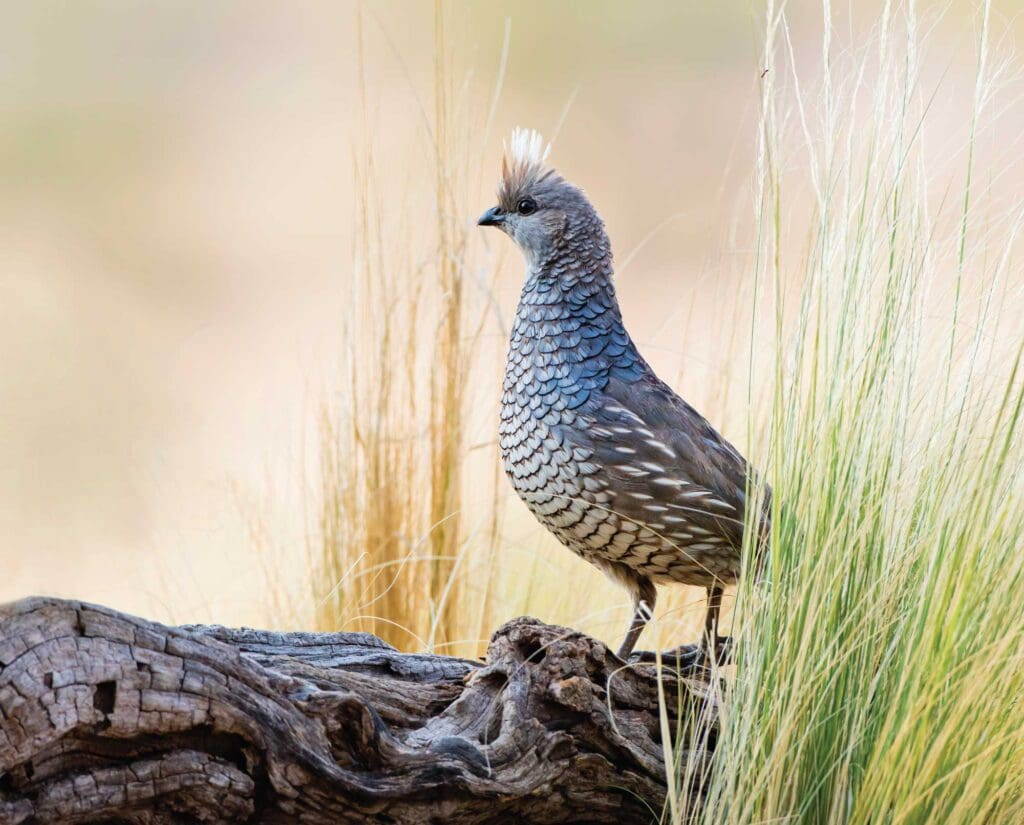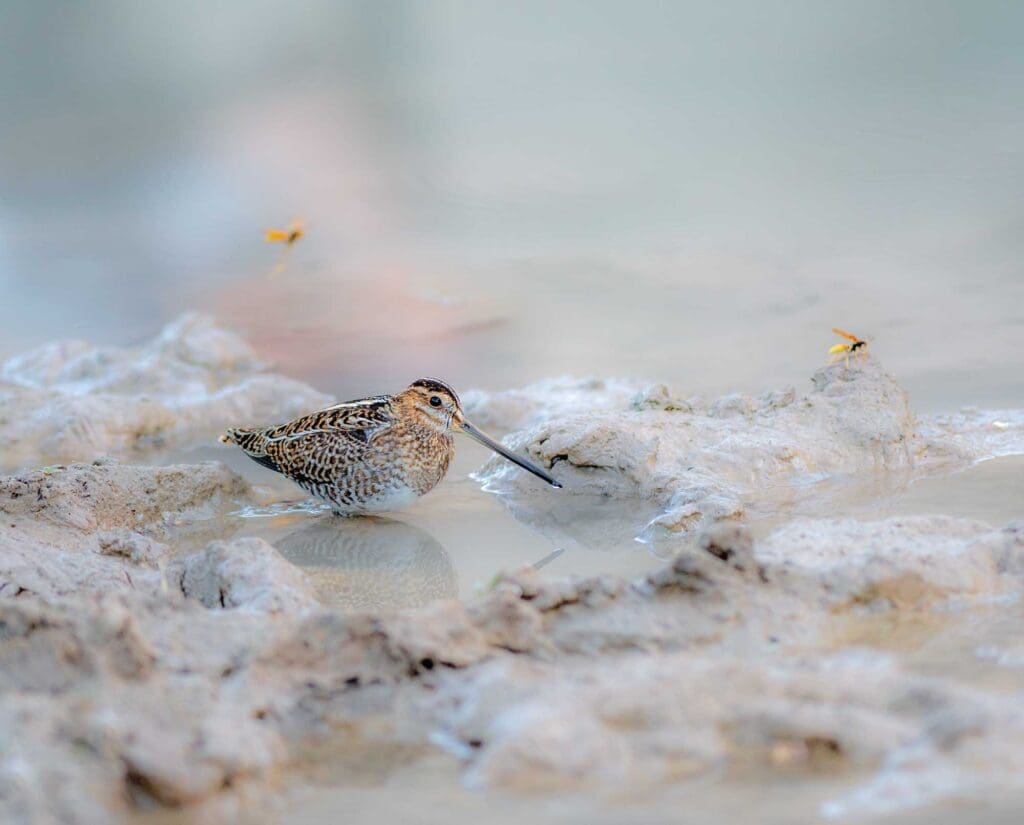Home » Hunting Rules, Licenses, and Seasons » Texas Bird Hunting: Quail, Chachalaca, Woodcock, Doves, and More
Texas Bird Hunting: Quail, Chachalaca, Woodcock, Doves, and More

Project Upland is an editorial initiative to capture the cultures…
When bird hunting in Texas the big state although known for private land still offers great public lands opportunities for quail to woodcock.
In the minds of many, Texas is incorrectly thought of as one big desert. All that reveals, however, is that they have not spent any time in its eastern forests, lower marshes, or central plains. Even the region that contains desert, the Trans-Pecos region, has wooded slopes on some of its mountains. The diversity of these ten eco-regions adds up to big possibilities for bird hunting in Texas.
Famous for its quail hunting, Texas offers opportunities to hunt bobwhite, scaled (blue), and Gambel’s quail across various parts of the state. On the eastern side of the state, there are even lesser-known secrets of American woodcock hunting as the birds migrate south for the winter. Texas provides a unique chance to encounter the unusual Chachalaca, which often roosts in abandoned structures. And let’s not forget the iconic dove hunting in Texas!
Here’s everything you need to know for the 2023-24 Texas bird hunting season.
| Species* | Season | Daily / Possession Limit | Notes |
| American woodcock | Dec 18, 2023 – Jan 31, 2024 | 3/9 | HIP survey required |
| Chachalaca | Oct. 28, 2023 – Feb. 25, 2024 | 5/15 | Cameron, Hidalgo, Starr & Willacy Counties |
| Bobwhite Quail | Oct. 29, 2023 – Feb. 26, 2024 | 15 / 45 combined quail species | |
| Scaled (Blue) Quail | Oct. 29, 2023 – Feb. 26, 2024 | 15 / 45 combined quail species | |
| Gambel’s Quail | Oct. 29, 2023 – Feb. 26, 2024 | 15 / 45 combined quail species | |
| Mearns Quail | CLOSED | NONE | |
| Mourning, White-winged, and White-tipped Dove | Sept. 1 – Nov. 13 & Dec. 17, 2023 – Jan. 1, 2024 | 15/45 no more than 2/6 white-tipped doves | North Zone |
| Mourning, White-winged, and White-tipped Dove | Sept. 1 – Oct. 30 & Dec. 17, 2023 – Jan. 15, 2024 | 15/45 no more than 2/6 white-tipped doves | Central Zone |
| Mourning, White-winged, and White-tipped Dove | Sept. 14 – Oct. 30 & Dec. 17, 2023 – Jan. 22, 2024 | 15/45 no more than 2/6 white-tipped doves | South Zone |
| Special White-winged Dove | Sept. 2-4 & 9-11, 2023 | 15/45 | Shooting hours are from noon to sunset |
| Eurasian Collared Doves | No Closed Season | No Bag Limit | |
| Common Pigeons (Rock Doves) | No Closed Season | No Bag Limit | |
| Ring-necked pheasant | Dec. 2 – Dec. 31, 2023 | 3/9 Roosters only | Panhandle |
| Snipe | Nov 4, 2023 – Feb 18, 2024 | 8 / 24 | |
| Sora & Virginia Rails | Sept. 10-25 & Nov. 8 – Dec. 28, 2023 | 25/75 |
American Woodcock
American woodcock distribution in Texas is not entirely known. As a migratory bird, of course, American woodcock only spend some of their wintering time in Texas. The entrance and exit of woodcock into the state depends mostly on the weather. If the winter is really bad, you can find a good number of woodcock in the eastern portions of the state.
The American woodcock season runs from December 18 to January 31, with a daily bag limit of 3. Woodcock hunting is governed by federal migratory laws and a HIP Survey is required.
Chachalaca
One of the birds that makes bird hunting in Texas unique is the enigmatic chachalaca, which derives its name from the sound of its call. The bird spends its time enjoying an activity few other game birds enjoy: roosting on the branches of trees. This practice earned the bird the nickname of “Mexican Tree Pheasant.” You can find chachalacas in scrubland and tall thickets. They are distributed from the Lower Rio Grande Valley of Texas to Nuevo Leon, Mexico, and beyond.
The chachalaca season takes place in the four counties of Cameron, Hidalgo, Starr, and Willacy. It runs from October 28 to February 25. The daily bag limit is 5.

Quail Hunting in Texas
The three kinds of quail in Texas — bobwhite, scaled, and Gambel’s — are all good options for bird hunting. Scaled quail, also known as blue quail, are found in the western third of the state, while Gambel’s quail make their habitat in the Trans-Pecos region. Of the three, however, bobwhite quail are typically the most common statewide. There has been some decline in the quail population, but the fluctuating population levels are a distinct phenomenon for this species.
The quail season runs from October 29 to February 26, with a daily bag limit of 15.
Dove and Pigeon Hunting in Texas
Dove hunting in Texas is divided into North, Central and South Zones. There are three native species of doves to hunt: mourning doves, white-winged doves, and white-tipped doves. White-winged doves have their own special area. For more detailed information concerning the zones for bird hunting in Texas, check the website for the Texas Parks & Wildlife Department. When hunting dove in Texas, it is important to check the doves for leg bands. Though they are easy to overlook, you must report doves with leg bands.
The North Zone season runs from September 1 to November 13 and December 17 to January 1. The Central Zone season runs from September 1 to October 30 and December 17 to January 15. The South Zone season is from September 14 to October 30 and December 17 to January 22. While further regulations apply, the white-winged dove seasons adds the additional days of September 2-4 and 9-11. There is a daily bag limit of 15 doves, but not more than two white-winged. Doves are governed by federal migratory laws and a HIP Survey is required.
There is no closed season or limit for Eurasian collared doves and common pigeons (rock doves).

Other Species for Bird Hunting in Texas
There are other great species for bird hunting in Texas. Wilson’s snipe, a migratory bird, and rail seasons are available. In addition to snipe hunting, ring-necked pheasant are open for bird hunting in Texas. While not a native bird, there are healthy populations in the Texas panhandle. Pheasant hunting season in the panhandle runs from December 2-31.
Related Conservation and Non-Profit Organizations for Texas Bird Hunting
North American Versatile Hunting Dog Association (NAVHDA)
Hunting License Requirements and Fees
| License* | Resident | Non-resident |
| Annual Hunting | $25.00 | $315.00 |
| 5-day hunting license | N/A | $48.00 |
| Special Small Game/Exotic Hunting | N/A | $132.00 |
| Annual Hunting Youth (Under 17) | $7.00 | N/A |
| Annual Hunting Senior (65+) | $7.00 | N/A |
| Upland game bird endorsement | $7.00 | $7.00 |
| Migratory game birds endorsement | $7.00 | $7.00 |
The Hunter Safety Course and Dog Training for Bird Hunting in Texas
The state of Texas requires anyone looking to buy a hunting license to have met the requirements of the corresponding hunter education programs. There are three ways to get that education certificate for bird hunting. The first is a classroom course that will take six hours. Another option is a four hour field day plus an approved online course. Finally, Texas offers an online course for Texas residents that anyone over 17 can take for $34. For further information, go to the online hunter safety course.
You may train your dog for bird hunting in Texas during established seasons on specific hunt areas.
*The bird hunting season dates, game bird species available, and other information is subject to change. The article may not reflect this. Please visit the Texas Parks & Wildlife Department for the most up-to-date information on bird hunting in Texas.
Project Upland is an editorial initiative to capture the cultures and traditions of upland bird hunting. We seek to inspire a future generation of upland bird hunters to understand the essence of hunting traditions and the critical cause for conservation.




Does this mean I need to take their Hunter safety course even as a non-resident?
Good question! The state of Texas does recognize out of state hunters education certificates. As worded on their website “Texas recognizes Hunter Education certificates from all other states and provinces. You will need to carry a proof of that certification on your person while hunting in Texas.” Thanks for the input!
There are actually 4 species of quail in Texas. Mearn’s quail occur as isolated populations in the western hill country and mountains of the Trans-Pecos, although there is no open season for them. So be aware there could be a protected species depending on where you hunt.
So a Texan who’s only birded in Tennessee thanks to father Inlaw and my English setters I was hooked I’m in Beaumont area with a new Gordon Setter ,Where is “THE PLACE” to go ?? Thanks Rodog